When you wake up in the morning and your furry friend rolls over next to you, there's a good chance there is some discharge in their eyes. Just like us, dogs can experience a build-up of eye discharge after waking up. Fortunately, there is an abundance of home remedies to help with eye discharge, such as saline.
Since many cases of eye discharge aren't serious, home remedies can be a good solution. They are often inexpensive and may already be in your home. While eye discharge is generally healthy and normal, there are cases that can be severe. The best way to distinguish between normal and potentially dangerous eye discharge is by doing proper research and paying careful attention to your pup. It's important to address any health concerns related to your pet's eyes promptly.
What is Eye Discharge?
Similar to humans, eye discharge is common in dogs and serves as a crucial mechanism for cleaning and maintaining eye health. While some types of eye discharge are normal and can be treated with home remedies, others may indicate serious health problems, like bacterial eye infections. Before we explore remedies, it's essential to distinguish between normal and excessive eye discharge.

Your dog's tears regularly flow through ducts found at the inner corner of each eye. That's where nasolacrimal duct eye discharge is typically located. Eye discharge can be comprised of dust, oil, dried tears, mucus, dead cells, and other similar minuscule objects in the air. Normal eye discharge will either be clear or brownish-red in color.
Regular eye discharge occurs most often in the morning or after a long nap. If healthy, the amount should remain consistent and constant. Irregular eye discharge can be persistent, sporadic, and vary in amount. It may consist of eye redness, irritation around the eyes, pus, crusty buildup, smelly facial fur, or dry eye.
Read More : Probiotics For Dogs
What are the Causes of Eye Discharge in Dogs
Common Causes
Eye discharge can be caused by a number of different factors. According to PetMD, excessive eye-watering is linked with various conditions, ranging from harmless to severe. The most common causes of eye discharge include:
Irritants
Irritants such as smoke, dust, or chemicals can cause temporary eye discomfort in dogs, leading to increased tear production and discharge as the eye tries to flush out the offending particles.
Allergies
Dogs can suffer from allergies to environmental factors like pollen, mold, or dander, which can result in itchy, watery eyes and increased eye discharge.
Inflammation of the Cornea
Inflammation of the cornea, also known as keratitis, can result from infections, injuries, or autoimmune diseases, causing redness, discomfort, and increased discharge as the eye reacts to the irritation. Allergy plays a role in some cases.
Blocked Tear Ducts
Blocked tear ducts prevent normal tear drainage, leading to an overflow of tears and persistent discharge that may appear clear or slightly cloudy.
Dry Eye
Dry eye, or keratoconjunctivitis sicca (KCS), is a condition where the eyes do not produce enough tears, leading to dryness, irritation, and a thick, sticky discharge as the eyes attempt to compensate with mucus production.
Glaucoma
Glaucoma is a serious condition characterized by increased pressure within the eye, which can cause pain, cloudiness, and excessive tearing as the eye struggles to relieve the pressure.
Foreign Material in the Eye
Foreign objects like dust, sand, or small debris can become lodged in a dog's eye, causing irritation, redness, and increased tear production to flush out the material.
Anatomical Abnormalities
Certain breeds are prone to anatomical abnormalities, such as rolled-in eyelids (entropion) or shallow eye sockets, which can cause irritation, excessive tearing, and discharge due to improper eye protection and nasolacrimal duct drainage.
Corneal Wounds
Injuries to the cornea, such as scratches or ulcers, can result in pain, redness, and a watery or mucoid discharge as the eye attempts to heal and protect itself from further damage.
Less Common Causes
Since the dog's eyes are so sensitive, many things can cause issues. While these problems may not be common, they are potential reasons for a dog with uncomfortable eyes:
- Viruses such as herpes, hepatitis, distemper, and canine influenza
- Bacteria like canine brucellosis
- Leptospirosis
- Parasites
- Tumors
- Poisoning
- Vitamin deficiency
- Tick-borne diseases such as canine ehrlichiosis and Lyme disease
- Cherry eye, a rare ailment where your pup's third eyelid becomes enlarged
Eye Infection Discharge
If your pup is producing yellow or green eye discharge, this can be a sign of an eye infection. Eye redness and visible discomfort typically accompany green or yellow eye discharge. Sometimes, dog eye infections are the central issue, but many times yellow or green discharge is a result of another ailment such as dry eye.

Related Illnesses or Infections
In some cases, yellow or green discharge that appears to be from a dog eye infection is actually a sign of infections or illnesses within the respiratory tract, nervous system, and other parts of the body.
Dry Eye
Dry eye, also known as keratoconjunctivitis sicca (KCS), occurs when a dog’s immune system attacks and damages tear glands. Tears produce much-needed moisture for your pup's eyes to function properly. If there are fewer tears, your dog's body will produce mucus in an attempt to lubricate the eye.
The overproduction of mucus can lead to red and often painful eyes, and if left untreated, can cause blindness. If there is gray or white mucus accumulating around your pup's eyes, your veterinarian can perform a “Schirmer Tear Test” to discern KCS from other diseases. Treatment may involve eye drop medication or topical medication.
Red Eye
Conjunctivitis (often called pink eye or red eye) may cause eye discharge in your pup as well. Conjunctivitis refers to the inflammation of the conjunctiva, a thin mucous membrane that covers the eye but there's a lot of home remedies for dog conjunctivitis. Another condition that can cause eye discharge is uveitis, which refers to inflammation of the inner structures of the eye.
There are two types of conjunctivitis in dogs. Infectious conjunctivitis, or pink eye, is caused by a viral or bacterial infection and is rare. Non-infectious conjunctivitis, which is much more common, can be caused by allergies.
Genetic Predisposition (Brachycephalic Breeds)
Certain dogs are genetically predisposed to eye conditions that result in excess tears. Particular breeds, such as brachycephalic breeds, spaniels, and terriers, may generate excess tears and reddish-brown mucus in the corner of their eyes. The short snouts of these breeds may cause complications for the dog's eyes, such as shallow eye sockets, compressed tear ducts, corneal ulcers, and abnormal eyelash growth.
Recognizing the Symptoms of Eye Infections in Dogs
Dog eye infections can cause significant discomfort and may lead to serious complications if left untreated. Recognizing the symptoms early can help ensure prompt veterinary care and effective treatment with antibiotic. Common symptoms of eye infections in dogs include:
- Redness and inflammation. The whites of the eyes may appear red and swollen.
- Excessive discharge. Look for yellow, green, or white discharge that may be crusty or sticky.
- Squinting or blinking. Dogs with eye infections often squint, blink frequently, or keep their eyes partially closed due to pain or discomfort.
- Pawing at the eyes. Frequent rubbing or pawing at the eyes can indicate irritation.
- Swollen eyelids. The eyelids may appear puffy or swollen.
- Tearing or watery eyes. Excessive tearing or watery eyes can be a sign of infection.
- Cloudiness or change in eye color. The eyes may appear cloudy or change color, indicating an underlying issue.
- Behavioral changes. Your dog may become more lethargic or irritable due to discomfort.
Eye discharge may not be the only sign of a dog eye infection. It is possible that your pup cleans their eyes well before you spot any discharge. Because of this, attentive dog owners should also watch for:
- Pawing at the eye
- Holding eye closed
- Signs of discomfort
- Squinting
- Blinking
- Swelling
- Light sensitivity
Glaucoma is caused by excessive pressure in the human eye and can be discerned in several ways. Cloudy eyes, bulging eyes, and excessive tearing are all symptoms of glaucoma. This ailment can cause serious pain, possibly requiring surgery. Light-coated pups often generate a reddish-brown discharge around the corner of their eyes.
Tears contain a pigment called porphyrin that turns reddish-brown when exposed to air for extended periods. This reddish-brown eye discharge is normal and shouldn't cause any concern.

Home Remedies for Preventing Eye Discharge in Dogs
Since your furry friend should naturally produce eye discharge, there should be no need to try and prevent it. If your pup has an alarming amount of discharge, it may be that your dog's eyes have been exposed to an excessive amount of dog food such as dust or sand. Owners can make sure their dog's eyes are shielded on notably windy days from sand, dust, and pollen by keeping them indoors or fitting them with dog goggles.
Goggles also work well for pups who like to peek their head out of car windows. Dogs that scratch themselves more often may be prone to scratching their face and causing irritation to the eye. Luckily there are some helpful home remedies for itchy dogs too. Sometimes, an increase in eye discharge can signal the arrival of allergies. Just like humans, dogs can develop allergies later in their life.
For dogs, allergies can result in hives, watery eyes, eye inflammation, breathing issues, and more. So how to treat dog eye infection without vet Providing eye drops or allergy medication can help prevent eye discharge in this situation. Trimming the hair around your pup's eye may also ease irritation in the area. Owners should attempt to avoid the introduction of foreign bodies to their pup's eyes.
Many times we allow our dogs to stick their heads out the car window while driving. Dust, dirt, sand, pollen, seeds, and other foreign objects can fly into your dog's eyes while its head is out the window. While we are not recommending that you never allow your dog to hang its head out the window, limiting this behavior may help a pup suffering from eye irritation due to allergen.
Home Remedies for Eye Discharge
Regular Cleaning
The most efficient dog eye discharge home remedy for dog eye discharge is regular cleaning. Owners can use a clean cotton cloth dampened (not soaked) in warm water. A small gauze will work just as well. Start at the inside of the eye (the area closest to the nose) and work your way outward. Be as gentle as possible with your pup and avoid pushing the discharge back into the eye.
Many owners find use in warm saline solutions. In a cup of warm water, use no more than half a teaspoon of salt and stir until fully dissolved. Soak a cloth in the saline solution and lightly wipe the discharge away from the eyes. The salt and water may be able to prevent infections from entering the eye. We recommend steering clear of solutions that contain chemicals or preservatives. You can repeat this process up to 3 times a day.
Diet Corrections
Nutrition can also play a key role in helping with dog eye discharge. Changing to a fresh food dietcan especially improve vision and help eye issues heal. They recommend Carotene-rich foods such as carrots, pumpkin, andsweet potatoes. Blueberries, broccoli, kale, and sardines, provide different nutrients such as antioxidants, phytonutrients, and omega oils, respectively. Sometimes you can find healthy CBD dog treatsthat include many of these ingredients.
Helpful Herbs
Herbs are another helpful for dog eye infection home remedy. Astaxanthin, which is an algae that contains antioxidants and phytonutrients, can work wonders for eye health. Marigold is a potent source of a carotenoid that’s important for eye wellness, and it too can help with eye discharge.

Conclusion
If your pet seems to be leaking at the eyes more than usual, try these helpful and inexpensive home remedies for eye discharge. If you are able to take care of the issue without an expensive vet visit, you can use that money to care for your pooch in other ways. However, remember that there are some cases where a vet should be contacted immediately.
For example, signs of infection and dry eyes should not be ignored. Some of these signs include yellow or greenish discharge (infection) and white, gray, thick, or smelly eye leakage (dry eye). Dogs' eyes are just as sensitive as ours, so make sure to keep a close eye on your pup (pun intended). Click here for all things related to dog home remediesor check out our homepage here!

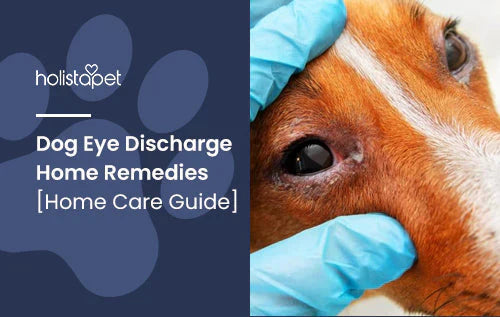
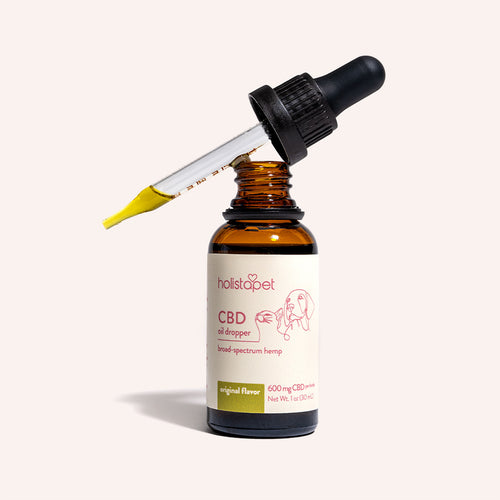 Broad Spectrum CBD Oil for Dogs - Fast Acting
Broad Spectrum CBD Oil for Dogs - Fast Acting
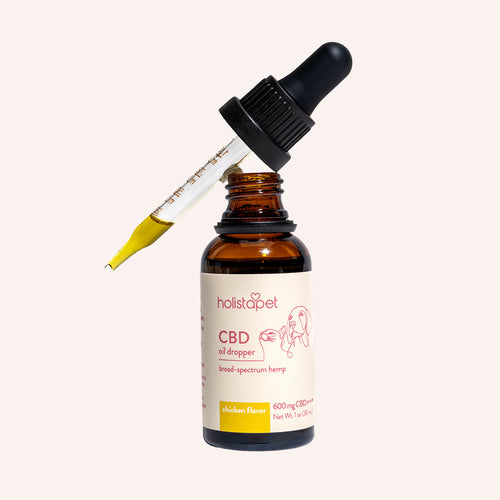 Chicken Flavored CBD Oil For Dogs - Easy Dose
Chicken Flavored CBD Oil For Dogs - Easy Dose
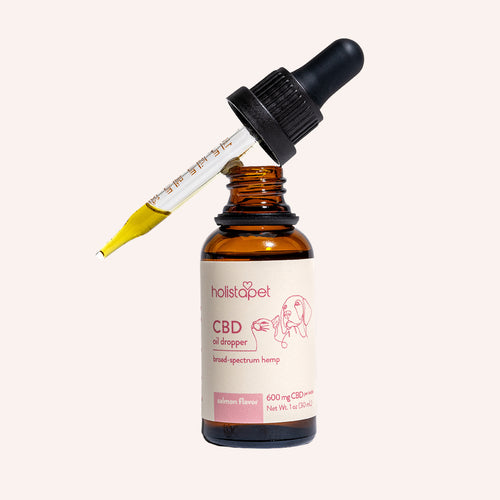 Salmon Flavored CBD Oil For Dogs - Highly Rated
Salmon Flavored CBD Oil For Dogs - Highly Rated
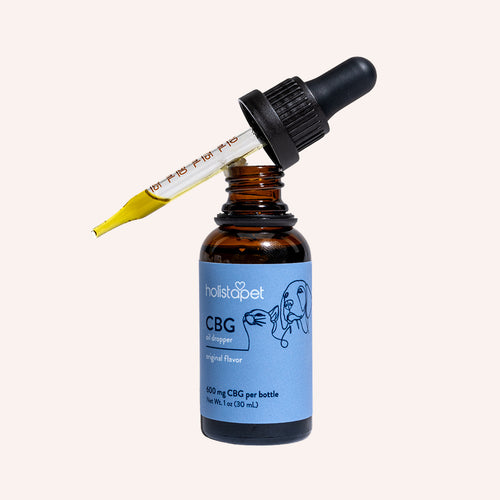 CBG Oil for Dogs and Cats - Loved by Thousands
CBG Oil for Dogs and Cats - Loved by Thousands



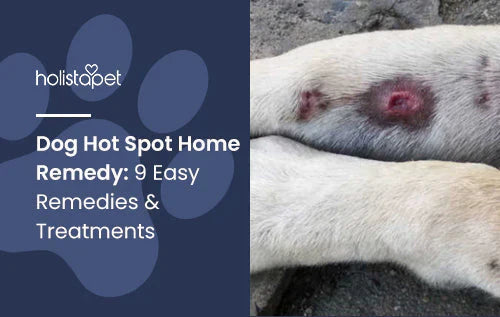

Leave a comment
All comments are moderated before being published.
This site is protected by hCaptcha and the hCaptcha Privacy Policy and Terms of Service apply.